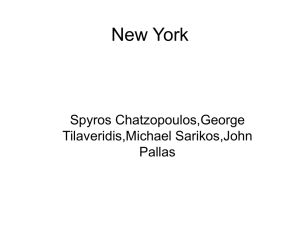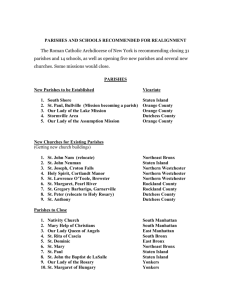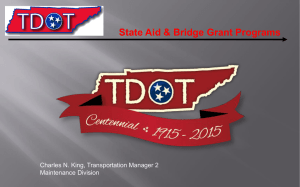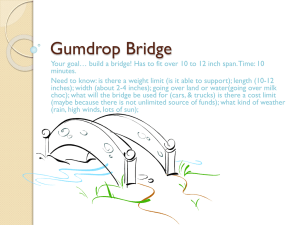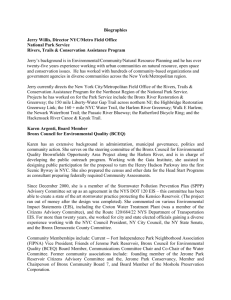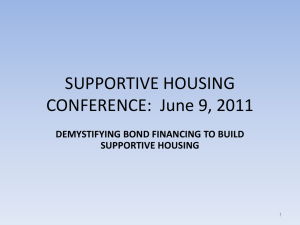Presentation - Ned Dimitrov
advertisement
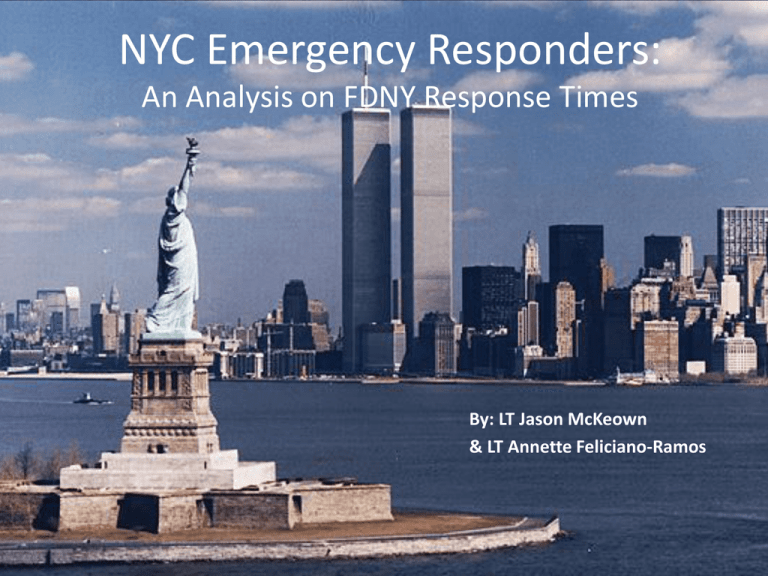
NYC Emergency Responders: An Analysis on FDNY Response Times By: LT Jason McKeown & LT Annette Feliciano-Ramos Agenda • • • • • • • Background Story/Problem Statement Network Model Method Formulation Results Analysis Conclusions World Trade Center Attacks • FDNY Response – 200+ Units • Combined companies – First 3 Hours • • • • 121 Engines (61%) 62 Ladders (43%) 27 Chiefs (47%) Lead to management difficulties – City Wide Coverage Maintained • Avg Response time: 5.5min • FDNY Losses – 343 Fire Fighters – 98 Vehicles Problem Statement Evaluate fire department city wide response for a catastrophic high rise fire with the presence of degraded infrastructure. Why? • Construction is currently underway to build the new “One World Trade Center” building. • Creates a target for future, possibly more sophisticated, terrorist attacks. • Attacking infrastructure to impede emergency response is a possibility. FDNY Structure • New York City – Consists of 5 Boroughs • • • • • Manhattan The Bronx Brooklyn Queens Staten Island – Connected by bridge and tunnel network. • Brooklyn Bridge • JFK Bridge • Etc. – Emergency Response Strength • • • • • 15,870 Responders 52 Battalions 251 Stations 198 Engines 143 Ladders • FDNY Structure • Fire Commissioner (Civilian) • Overall authority in NYC • Chief of Department • Highest ranking fire fighter • Chief of Fire Operations • Responsible for fire fighting efforts throughout the city • Borough Chiefs • Responsible for fire fighting efforts in their respective Boroughs • Division Chief • Battalion Chief • Captain (Fire Station Commander) Network Model • Nodes (254) – – – – Start Node Fire Houses Bridges WTC (destination) • Edges (1289) – Start to Fire Houses – Fire House to Bridge Arcs – Bridge to Bridge Arcs • Data – Avg Response Times – Fire House Locations – Fire House Capacities – http://nycopendata.socrata.com/ Assumptions • Borough response times are homogenized. • FDNY response is contained within NYC boarders. • All non-attacked bridges are currently available for transit. • Responding Fire Houses utilize all resources available. • Response is instantaneous (no response lag). Bronx Manhattan Queens Brooklyn Staten Island Bronx Manhattan Staten Island Queens Brooklyn New York City Staten Island Staten Island Staten Island Brooklyn Manhattan Bridge Williamsburg Bridge Brooklyn Bridge Brooklyn Brooklyn Bronx Whitestone Bridge Throgs Neck Bridge Queens Bronx Whitestone Bridge Throgs Neck Bridge Queensborough Bridge Queens Bronx Whitestone Bridge Queens Bronx Throgs Neck Bridge Bronx Whitestone Bridge Bronx Throgs Neck Bridge Bronx Whitestone Bridge Bronx Manhattan Manhattan WTC Manhattan WTC New York City New York City Bridges to WTC Min Cost Flow • Purpose: Minimize the average response times of emergency responders given a prerequisite number of units. (ex: 50 Fire Stations Responding). – Attacks on the network are aimed at vital nodes that provide connections to other boroughs Manhattan Isolation (# attacks > # bridges) Manhattan Isolation 1000 Avg Time (min) 100 10 Avg Time 1 0.1 0 10 20 30 40 50 60 Req'd Responders Manhattan contains 48 Fire Stations. Thus for a situation where 49 responders are required, FDNY Manhattan would be overwhelmed if they were to receive no outside assistance. Attacking the Network (49-198 Req’d) Operator Resilience Curve 10000 Avg Time (min) 1000 100 10 49 Req'd 83 Req'd 148 Req'd 153 Req'd 1 0 1 2 3 4 5 6 7 8 9 10 11 12 13 14 15 16 198 Req'd # of Attacks 15-16: Isolation of Manhattan 6-7: Isolation of Manhattan & The Bronx 4-5: Isolation of Manhattan, The Bronx, and Queens 3-4: Isolation of Manhattan, The Bronx, Queens, and Brooklyn. This also removes the need for Staten Island. Conclusions • To Overwhelm the FDNY – Requires another 9/11 type attack. • Massive response requires manpower and resources – Requires isolation of the borough • Level of sophistication would be very high • Would not go unnoticed • Extensive bridge network needs to be defeated. Future Research • Determine Fire House dispatch procedures to determine individual node capacities. • Obtain actual list of dispatched Fire Houses and those that selfdispatched. Image credit: Joe Woolhead Courtesy of: Silverstein Properties Taken: September 08, 2011 Questions

